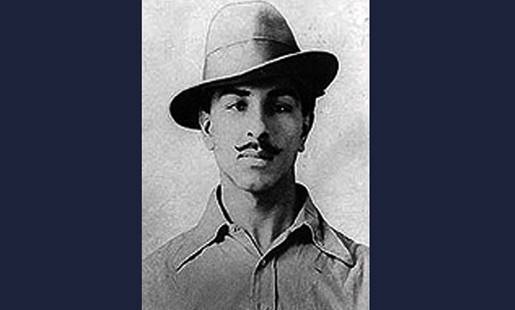Ghadar, Bhagat Singh and their legacies discussed
By Majid Sheikh
Dawn : December 8th , 2014
|
Bhagat Singh . — Courtesy Wikimedia Commons |
On the concluding day of the international conference commemorating the 100th anniversary of the Ghadar Movement, speakers analysed various aspects of its revolutionary nature, including the influence it had on later revolutionaries like Bhagat Singh.
The keynote speaker was Dr Mubarak Ali, who spoke of the quality of revolutionary interruptions that have taken place in the recent history of the subcontinent.
He dwelt on the state of historiography in Pakistan and felt that except for a few individual efforts, very little scholarship exists in the country. He also felt that recent movements like the lawyers movement in the end very quickly fizzled out, or rather degenerated.
He also felt that the Tehreek-i-Insaf movement could also end up similarly. The issue is to keep the momentum going and not let it meet a violent end.
In the first session three speakers read their papers. Chris Moffat of the University of Cambridge dwelt on the process of ‘celebrating’ revolutionary movements, with the aim being to grant them a ‘continuity’. What it does is it misses out on the ‘jagged edges’ that provide a foothold to those who wish to move beyond it. Moffat then went on to explain this thesis with the example of Bhagat Singh and the role of Bradlaugh Hall on Rattigan Road and how the Ghadar Movement contributed to that revolutionary process.
The renewed interest in the martyr that Bhagat Singh has become is part of that continuity that ‘celebration’ has provided it.
His interesting talk was followed by a presentation by Dr Virinder Kalra of the University of Manchester. His talk focussed on the ‘migrant consciousness’ and the legacies of the Ghadar Movement. In particular he focused on Udham Singh and the Indian Workers Association, and from it drew the legacies that it generated. The connections between the two were explained, especially in terms of the racial and other attributes that came forth in poetic expressions. His was more of a sociological approach and added much to the historic discourse of the Ghadar Movement.
Last in this session was an interesting talk by Kasim Tirmizey of York University on ‘grain prices and shortages’ of that times and how it contributed to the tensions generated by colonial policies. His was a statistical analysis of grain supply and how its disruption fuelled anti-imperialist sentiments. He also dealt with the February 1915 food processions in Lahore and how the colonial government tackled opposition.
In the last session the main talk was by the well-known Indian scholar Syed Irfan Habib, who gave a very interesting talk on the legacy of Bhagat Singh. He picked up the threads of the Ghadar legacy from his uncle Ajit Singh and carried it forward. But the difference was that Bhagat Singh was an educated revolutionary thinker. He was able to analyse the socio-political and economic policies of the colonial rulers and, most importantly, presented an alternative solution. He was of the view that the great work of Bhagat Singh had been forgotten by both India and Pakistan. As Lahore was where he lived, studied and carried out his revolutionary activities, he considered the city to have been lucky to have such a revolutionary tradition to look up to.
The international conference certainly was a unique undertaking by the Lahore University of Management Sciences (LUMS), and the presence of some of the finest scholars from all over the world made it stand out as a high-quality event.
